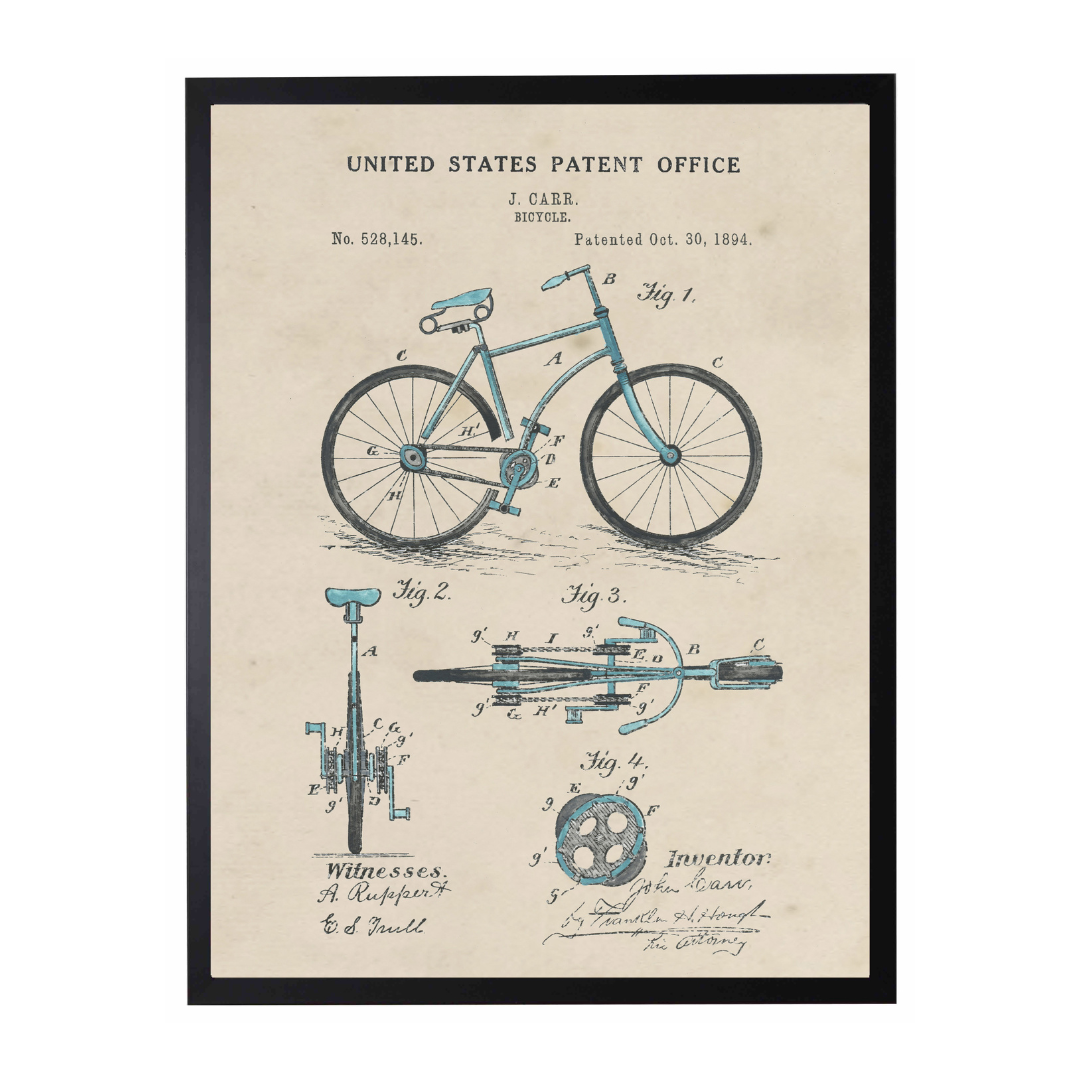The first iteration of the bicycle was invented by German Baron Karl von Drais. In 1817, he invented the Laufmaschine, German for “running machine.” The bike design consisted of two wheels, steerable handle bars, and was propelled by people running (there were no pedals).

It wasn’t until 1839 that the first mechanically propelled bicycle was invented. Kirkpatrick Macmillan, a Scottish blacksmith, invented a bike with a large back wheel and much smaller front wheel controlled by petals connected to the front wheel. In 1863, the pedal and crank was invented, making bicycles much easier to propel.

In the 1870s, the high-wheel bicycle, also called a penny-farthing, was invented. The large front wheel enabled people to travel at much higher speeds, and the small rear wheel made the frame lighter. Penny farthings were fast but very dangerous as they didn’t have a braking mechanism, and rider’s legs often got caught under the handlebars.
The safety bicycle was invented in the 1880s and 1890s. These bikes are more reminiscent of the bicycles we have today, with small front and back tires and rear wheel drive. These bikes became much safer to operate, and as a result, bicycling transitioned from being a dangerous toy to a practical form of transportation for people of all ages. Slight modifications to bicycle design in the 20th century lead to the bicycles we have today.

In 1894, John Carr, from Philadelphia filed a patent for a novel bicycle design. Carr patented a new gearing system with elliptical wheels intended to minimize loss of motion and power.
Check out the patent





